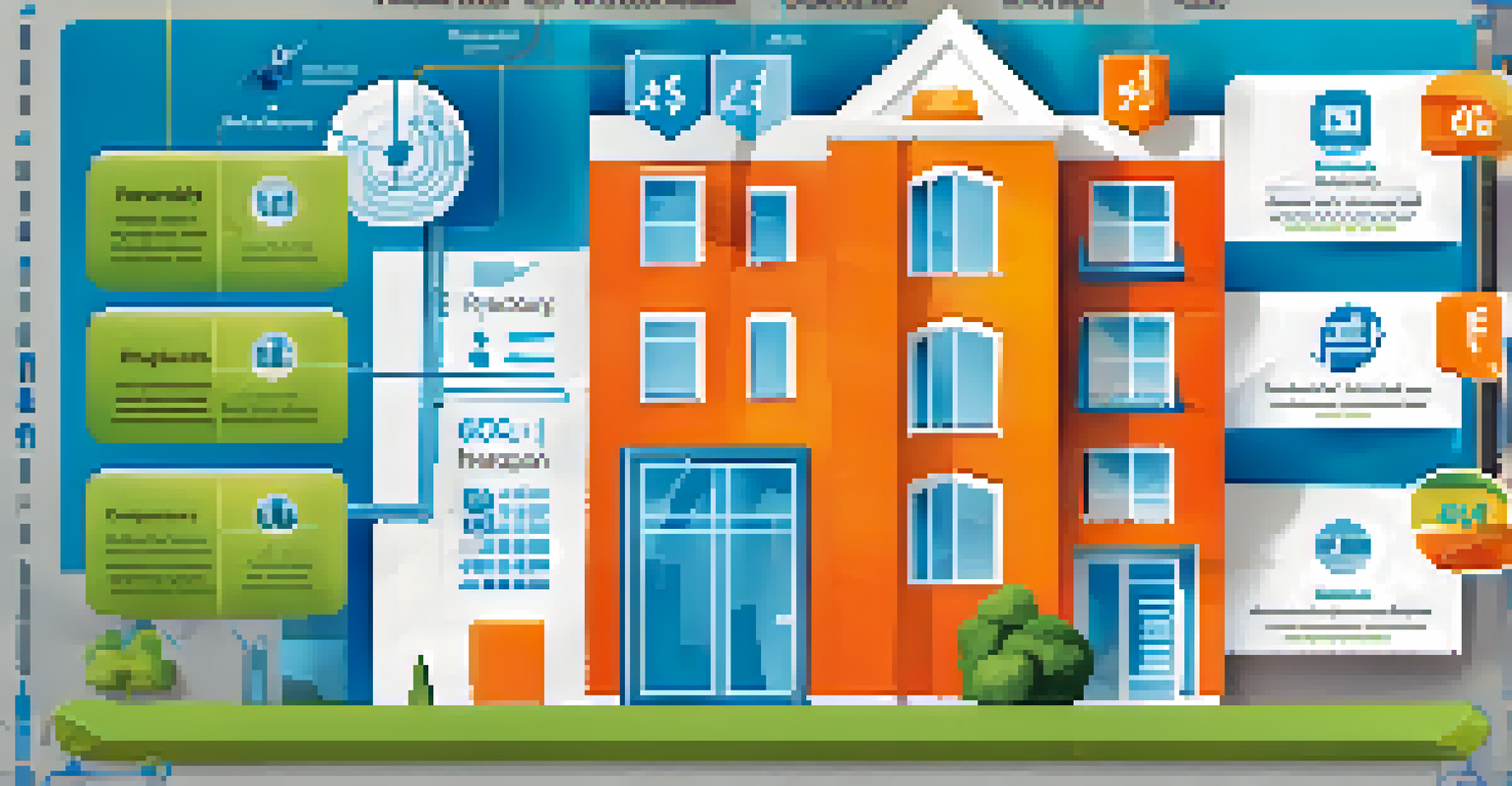How to Use Data Analytics in Rental Property Management

Understanding Data Analytics in Property Management
Data analytics in property management refers to the process of collecting, analyzing, and interpreting data to enhance decision-making. It encompasses various metrics such as occupancy rates, rental income, and tenant satisfaction. By understanding these metrics, property managers can make informed choices that benefit both the property owner and tenants.
In God we trust; all others bring data.
For instance, analyzing historical rental data can help identify trends in tenant preferences or peak rental seasons. This insight allows property managers to adjust rental strategies accordingly. In a way, data analytics acts like a compass, guiding managers to the most profitable paths.
Ultimately, embracing data analytics is about transforming raw numbers into actionable insights. This shift can lead to improved efficiency, reduced costs, and a better overall experience for everyone involved.
Collecting Relevant Data for Analysis
The first step in leveraging data analytics is to gather relevant data. This can include tenant demographics, rental history, maintenance requests, and market trends. By compiling this information, property managers can create a comprehensive dataset that paints a clear picture of their operations.

For example, tracking tenant turnover rates can reveal patterns that may indicate underlying issues, such as inadequate property maintenance or high rental prices. Recognizing these patterns early on allows managers to implement changes before they escalate into bigger problems.
Data Analytics Enhances Decision-Making
Utilizing data analytics helps property managers make informed decisions that benefit both property owners and tenants.
In today’s digital age, there are numerous tools available for data collection, from property management software to online surveys. Utilizing these tools not only streamlines the process but also enhances the accuracy of the data collected.
Analyzing Data to Identify Trends
Once the data is collected, the next step is analysis. This involves examining the data for trends, anomalies, and correlations. For instance, by analyzing occupancy rates and rental prices, managers can determine if their pricing strategy aligns with market demand.
What gets measured gets managed.
Identifying trends can also help predict future behaviors. For example, if data shows that younger tenants prefer shorter lease terms, property managers can adapt their offerings to cater to this demographic. This proactive approach can lead to higher tenant satisfaction and retention.
Data analysis doesn’t have to be daunting; many user-friendly tools can assist in visualizing data through charts and graphs. This makes it easier to communicate insights to stakeholders and align strategies accordingly.
Enhancing Tenant Experience with Data Insights
One of the most significant benefits of data analytics is its ability to enhance the tenant experience. By understanding tenant preferences and behaviors, property managers can tailor services to meet their needs. For instance, analyzing feedback from tenant surveys can reveal areas for improvement in property management.
A great example is implementing a maintenance request system that tracks response times and satisfaction levels. By using data to improve maintenance services, property managers can significantly increase tenant satisfaction and loyalty.
Improving Tenant Experience Matters
By analyzing tenant preferences and feedback, property managers can tailor their services to boost satisfaction and retention.
Ultimately, happy tenants are more likely to renew leases and recommend properties to others. Therefore, leveraging data analytics to enhance tenant experience is not just beneficial—it's essential for long-term success.
Optimizing Marketing Strategies with Data
Data analytics can also play a pivotal role in optimizing marketing strategies for rental properties. By analyzing data on prospective tenants, property managers can target their marketing efforts more effectively. This means reaching the right audience with the right message at the right time.
For instance, if data reveals that most inquiries come from social media platforms, managers can focus their advertising budget on those channels. This targeted approach often leads to higher conversion rates and lower marketing costs.
Moreover, understanding which marketing strategies yield the highest return on investment allows managers to refine their tactics over time, ensuring their efforts are both efficient and effective.
Using Data to Improve Financial Performance
Data analytics is invaluable for improving the financial performance of rental properties. By analyzing income and expense data, property managers can identify areas where costs can be reduced or revenue can be increased. For example, tracking maintenance expenses can help managers find more cost-effective service providers.
Additionally, analytics can help in forecasting future cash flows. Understanding seasonal trends in rental income can assist in budgeting and financial planning. For instance, if data indicates that rental income dips in winter months, managers can prepare for leaner times by adjusting their budgets accordingly.
Predictive Analytics Mitigates Risks
Predictive analytics enables property managers to identify potential issues early, reducing costs and enhancing tenant satisfaction.
In essence, data analytics empowers property managers to make smarter financial decisions, ultimately leading to increased profitability.
Mitigating Risks Through Predictive Analytics
Predictive analytics, a subset of data analytics, can help property managers mitigate risks. By analyzing historical data, managers can identify potential issues before they become significant problems. For instance, if data shows that certain properties have higher maintenance issues, managers can proactively address these concerns.
This approach not only saves time and money but also enhances tenant satisfaction. By anticipating problems and resolving them quickly, property managers can reduce tenant turnover and maintain a positive reputation.

Moreover, predictive analytics can be applied to tenant screening processes. By analyzing the rental history of applicants, managers can make more informed decisions, reducing the likelihood of future evictions or payment issues.
Embracing a Data-Driven Culture in Property Management
The final piece of the puzzle is fostering a data-driven culture within the property management team. This involves training staff on the importance of data analytics and how to use it effectively. When everyone on the team understands the value of data, they can contribute to a more informed decision-making process.
Encouraging an open environment where team members share insights and findings can lead to innovative solutions and improvements. For instance, regular meetings to discuss data findings can spark conversations that lead to actionable strategies.
Ultimately, embracing a data-driven culture positions property management teams for long-term success, allowing them to adapt to market changes and tenant needs with agility and precision.